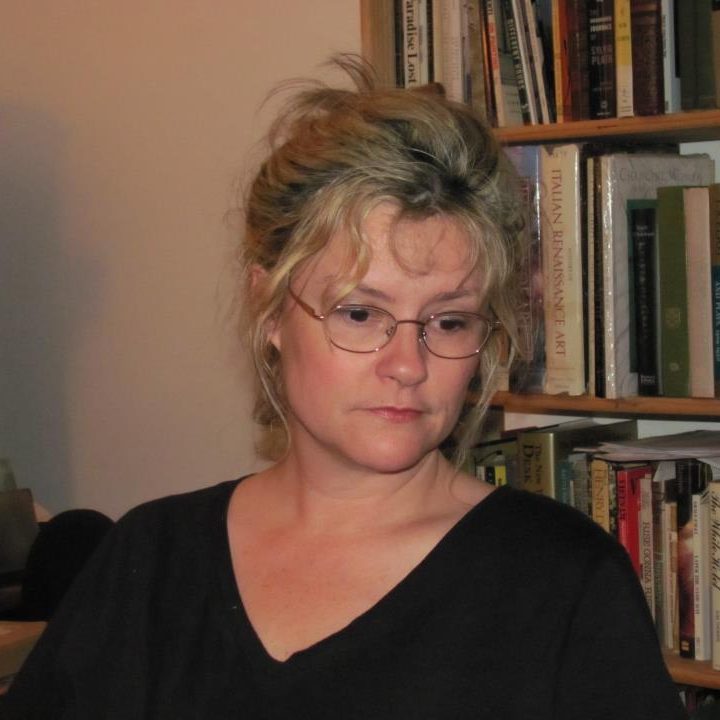“Do you have pets?” she asked.
The Occupational Therapist at the University of Virginia Hospital sounded badly spooked. After a car crash, I had a sternal fracture, spinal breaks, neck tears, traumatic brain injury, and extensive and deep bruising on my legs and stomach. But on that day in early March of 2021, my body’s ravages mattered less than the results of the Covid test I took three days before when I entered the Emergency Department.
“Yes, I have two cats,” I said.
“You know you are going to have to quarantine them in the house when you go home,” she said. She asked me about my cats because I had tested positive for Covid with a PCR test. EMTs took me to the emergency room, and a couple of hours later, employees inserted a swab deep into my nostril.
I looked into her masked face behind a plastic shield, strapped to her forehead. We were in a time of widespread panic and paranoia after the country, and the world, shut down in March 2020. TV people, politicians, and bureaucrats forbid singing, church-going, and gathering for Thanksgiving dinner. We were told to be wary of anyone near us.
When the Occupational Therapist said my cats would have to be in a separate room when I went home, I knew at that moment that I had to get out of there as soon as possible. This was frightening and beyond me. It had become so bizarre that I even feared that they may not let me leave.
“Do you live alone?” she asked. Because I “had” Covid, I was going to have to isolate from people for several days after I left the hospital, she said. According to this specialist, I wasn’t supposed to be near people; I wasn’t supposed to be near pets. In what appeared to be full Hazmat gear, she had come to my large hospital room on the Covid Unit to prepare me for discharge and show me how I was supposed to take off and put on the full body brace I had to wear for the sternal fracture and spinal breaks and the neck brace for the neck tears, and I was supposed to do this by myself. There was no way I could do this by myself. It was absurd. Was this the protocol for a car accident victim who also had Covid?
Pain shot through my spine and gripped my neck. In the big room by myself, I worried about my so-called Covid. I watched the Hallmark Channel all day, managing pain with Oxycodone, Tylenol, muscle relaxers, and help from the nurses getting in and out of the bed with great difficulty to go to the bathroom. Though I had tested positive for Covid, I did not have so much as a sniffle and hadn’t for over a year. I had been teaching on Zoom and hardly going anywhere.
I knew I didn’t have Covid. I probably had Covid in January and February of 2020 before tests and lockdowns. Sickness ran through the public school where I taught then — with staff and students hacking and coughing for weeks. I made a couple of trips to the urgent care center to receive antibiotics that didn’t work and then drove myself to the ER where I got an inhaler that helped me breathe better.
I missed four days of work. Finally, my health improved, and I hadn’t been sick since with any respiratory illness. I did, however, come down with a horribly painful outbreak of shingles on my face and mouth, probably from stress of having to wear the mask, teach on Zoom from an empty classroom, and take the mask off and on at arbitrary times.
The night of my accident, I was driving on a weeknight to have dinner with my then boyfriend, now husband, and a friend at a Mexican restaurant in rural Virginia, a restaurant that had remained delightfully opened and welcoming in the middle of the shutdowns. At an intersection, another driver struck my car on the driver’s side and sent my car spinning and careening and then landing in a ditch. I wasn’t speeding. I was wearing a seatbelt. The other driver had run a light at an intersection. She may have been stressed and distracted from lockdowns and fear we had all been enduring for a year since March 2020.
This was the time of the “Stay Home. Save Lives” admonitions everywhere, a message that even flashed in neon lights on Rt. 64, a highway I traveled regularly. Many seemed to believe that the Covids would chase us down the highway and leap into our car window and up our noses if we traveled against government warnings. We were all in the midst of astonishing experiences.
A young woman in charge of food service at a conference I attended recently told me her mother would not let her come home from college in 2020 and 2021 because she had not received the Covid shot. People hiked wearing masks in the Shenandoah National Park and stepped away from you and even turned their backs to you when passing on hiking trails. Picnic tables at parks had crime scene tape over them to prevent gatherings. Benches had been removed.
From the scene of the accident, I was transported by ambulance to the UVa Emergency Department. For a few hours, while lying on my back and waiting on spinal and head injury specialists, I was given intravenous morphine that kept wearing off in minutes, and I begged for relief. Before giving me another dose, the nurse asked me to rate my pain from 1 – 10. It was over 11, I said. She finally switched to Dilaudid, which worked better. Sometime in the night, someone inserted a long Q-tip swab up my nose to test me for Covid.
Did they test everyone entering the hospital then? A couple of hours later, spine and head injury specialists examined me. After being told I would soon be transported to a unit upstairs, my boyfriend kissed me on the cheek and left. He said he would call the next day. Medical staff wheeled me to the unit to be admitted.
Within minutes of arriving in a room, shared with an elderly woman on the other side of a curtain, a nurse entered in full Hazmat gear, including gloves, mask, and face shield and told me that I had tested positive for Covid. They were going to have to take me to the Covid Unit. With some relief from pain, I argued. I had been reading and questioning since the onset of lockdowns in March 2020. I had read that the PCR tests didn’t work.
“I don’t have Covid,” I said. “That’s ridiculous. I haven’t been sick for over a year. I teach on Zoom and hardly go anywhere. The test is unreliable. I don’t need to go to the Covid unit,” I said. “I’m not going.” The nurse flustered then disappeared. She said she would check. She returned and said that this test was, in fact, accurate. Some tests may not be, but this one was, she said. I would be transported immediately to the Covid Unit. Another nurse tried to reassure me by saying I would get a big room to myself.
“It’s much nicer,” she said. “You’ll like it.” Nurses told the elderly woman in the room with me that she had been “exposed,” and they would have to move her in order to quarantine her. Confused, she mumbled and protested.
It was about three AM by then. Employees placed me on a gurney and wheeled me through hall after hall into the deep bowels of the hospital. I watched seams and florescent lights on the ceiling and heard and felt bumps on the floor. They hurt. It was a long way to the Covid Unit.
I arrived in a very big room with lots of equipment where I would stay for the next three days by myself. No visitors. Nurses would come and go, following an elaborate ritual each time they entered and exited. They donned special clothes, sprayed themselves with disinfectant, and stepped through what looked like pans of bleach. They removed and disposed of the clothes when they exited my room.
I kept waiting for the Covid to arrive. It never did. Though the room was full of equipment, I did not receive any discernible Covid treatment. No one asked me about Covid symptoms. No one asked me about breathing difficulty. No doctor entered the room and placed a stethoscope on my chest or back and asked me to take deep breaths. I didn’t receive any Hydroxychloroquine (HCQ) or Ivermectin, Covid medicines I learned about from a friend, who is an emergency room physician. I also read about these treatments from the Frontline Covid Critical Care Alliance (FLCCC).
To be prepared, early in lockdowns, I had gotten my boyfriend and me an HCQ, Azithromycin, and Zinc stash to keep at home. My doctor friend recommended it as part of what was called the Zelenko Protocol. From a Canadian pharmacy, I got the HCQ prescription filled by mail because US pharmacies would not fill it. My friend may even have his license threatened for prescribing it, he had told me. Most doctors wouldn’t. You couldn’t even talk about these medicines without being ridiculed, slandered, perhaps fired.
Even though I was not sick, except for bruises, broken bones, concussion and brain injury, my biggest worry during my time on the Covid Unit was that I may have given “it” to others and not known it. I knew this did not make sense, but this was the propaganda in which we had all been swimming for over a year. We were all potential disease spreaders, whether we knew it or not, whether we were sick or not. “Cases” or positive PCR test results, those red numbers flashing on TV screens kept rising, fueling panic. I waited for respiratory symptoms. I still didn’t have even the slightest cough or sniffle.
And yet, I lay in the hospital bed, thinking – maybe I really could have “it.” I wasn’t sick in the weeks before driving to the Mexican restaurant. I wasn’t sick in the car on the way there. Could I have gotten “it” in the middle of the road at the accident scene? Maybe “it” was from the kind woman who had pulled over. She was an off-duty nurse. She had called my boyfriend. I saw her empty infant car seat in the back of her car and asked, panicked, if her baby was OK.
She assured me her baby was at home and all right. Maybe I had gotten “it” from one of the many people who had gathered around me – in the headlights and flashing red lights’ glare — to help. Maybe “it” was from the cop who wrote the report or from one of the EMT drivers, who was wearing what looked like a gas mask when he shot Ketamine into my vein.
From my Covid Unit room, I called my boyfriend often and asked anxiously, “Do you have any symptoms?”
“No,” he said. “I’m fine here.” I watched the Hallmark Channel all day, Golden Girls in the mornings with the sound off and then sentimental movies all day. Nurses asked me to rate my pain. When the Oxycodone wore off too soon, it shot back to 10 or above. I was grateful for the drugs. It was also very good to talk to my principal when he called from the school where I taught. I missed my teacher friends.
The nurses were kind and proficient. I felt sorry that they had to wear such tight-fitting masks. One nurse talked about a few Covid deaths on the unit. Another, when I complained about my positive test when I knew I did not have Covid, said she understood that the test picked up old virus fragments and could produce a false positive.
I nodded consent when the Occupational Therapist told me to put my cats in a separate room when I returned home. I told her I would isolate and do my best to take off and put on the body and neck braces by myself if I bathed. A head injury specialist came and asked me questions from a questionnaire. I didn’t do very well on the test; she added traumatic brain injury to my diagnoses.
Other specialists did not come to the room – because I was on the Covid Unit, I suppose. A camera pointed at me somewhere near the wall-mounted TV screen. For evaluation, they viewed me through a camera, and I heard their voices through a speaker. They told me which pain and muscle medications I would be going home with.
I wondered how I would get home. Was it safe for my boyfriend to come get me? Could I tell my mom, who was in her 80s, that I “had” Covid? What about my sons? What was I supposed to say? I was grateful to see the sun and feel the air when the nurse wheeled me to the curb where my boyfriend waited with the car.
At home, I could only sleep in the recliner with the neck and body braces. Within a couple of days of arrival home, someone from the health department called. She asked many intrusive questions – Where did I work? Had I traveled recently? If so, to where? What were my recent activities? I began to get angry and told her I was home mostly, teaching on Zoom. Why was she asking where I worked? I worried for my privacy if my employer found out that I had “it,” though I knew the test didn’t work. I worried about discrimination.
“Why are you asking me these questions?” I said. “I don’t think I should be required to answer them. I have been doing almost nothing.” I told her that I thought the test didn’t work. That I didn’t think I had Covid. My boyfriend told me to just answer and get it over with. She continued questioning. I complied, and she seemed relieved. I could tell she was a mere low-level bureaucrat, doing a job she needed to have but probably didn’t want to do. She had a script of questions.
At the end of the interview, she concluded that I had probably gotten Covid in the hospital. A high percentage of people contracted Covid while in the hospital, she said. Did hospitals get paid more with positive Covid tests?
“OK, thank you,” I said and got off the phone. I thought about this for days and weeks as I recovered. My boyfriend and I never got sick. We continued life as normally as we could, doing farm chores, going to churches that were open, seeing friends. In the aftermath, I told this story to friends who would listen. I still tried to make sense of it all. It was outrageous. I was supposed to believe that Covid flew down from the rafters and up my nose right as the EMTs wheeled me into the UVa emergency room. I lay there with it for a couple of hours before they detected it with their long swab.
Good thing I made it to the Covid Unit in time.
Published under a Creative Commons Attribution 4.0 International License
For reprints, please set the canonical link back to the original Brownstone Institute Article and Author.









